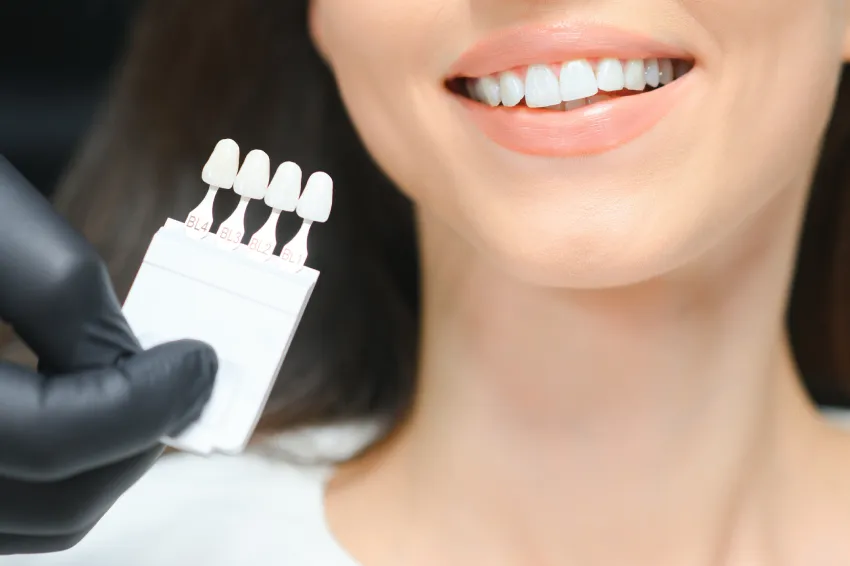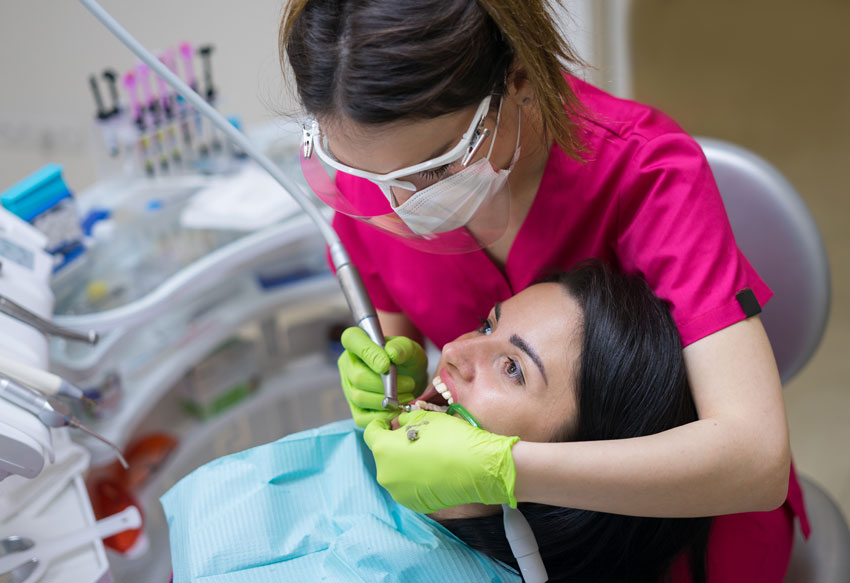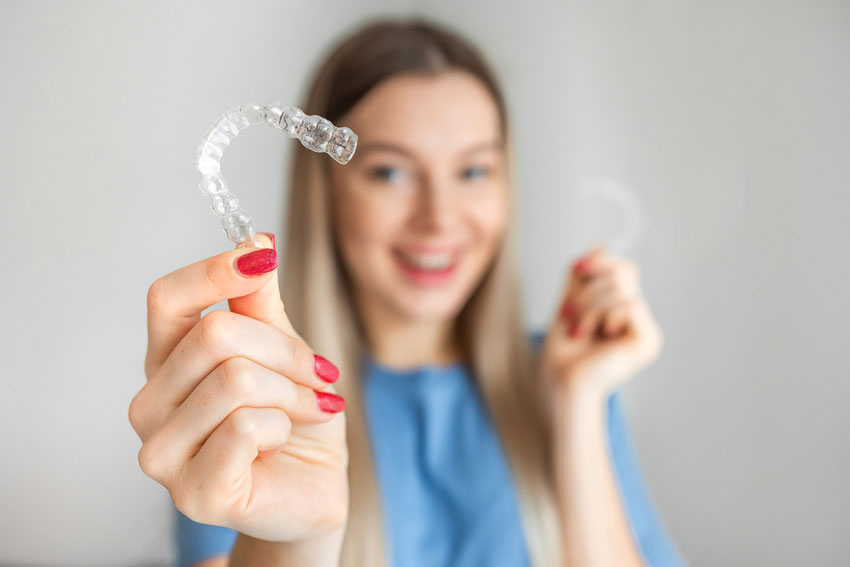Losing a dental filling can be alarming. One moment you’re eating lunch, the next you’re feeling something hard in your mouth—and suddenly you realize your tooth filling has fallen out. While it may not always feel like a dental emergency, acting quickly is key to preventing further damage and pain. At Fieldstone Dental in Brandon, MB, we help patients with lost fillings all the time. In this article, we’ll explain why fillings fall out, what to do right away, and how to avoid future problems. Why Do Fillings Fall Out? Fillings are durable, but they’re not indestructible. A variety of factors can lead to a filling coming loose or falling out: Even if your filling is relatively new, it can still come loose if the surrounding tooth structure weakens. Signs Your Filling Has Fallen Out It may not always be obvious when a filling comes out. Look for these common signs: If you experience any of these symptoms, don’t wait. The exposed tooth is vulnerable to damage, decay, and infection. What to Do Immediately If a Filling Falls Out 1. Stay Calm It may feel urgent, but you have time to handle the situation calmly. 2. Rinse Your Mouth Use warm salt water to rinse away any debris and keep the area clean. 3. Recover the Filling (If Possible) While it likely can’t be reused, your dentist may want to inspect it. 4. Avoid Chewing on That Side Stick to soft foods and avoid using the affected tooth to prevent pain or cracking. 5. Protect the Tooth Temporarily You can use sugar-free gum or orthodontic wax to cover the exposed area temporarily. 6. Call Your Dentist Contact Fieldstone Dental right away to book a restorative appointment. We offer same-day care for dental emergencies. What NOT to Do How Fieldstone Dental Can Help At Fieldstone Dental, we provide fast, professional care when dental fillings fall out. We offer: Located right here in Brandon, MB, our team is ready to restore your smile quickly and comfortably. How to Prevent Fillings from Falling Out Preventive care can help fillings last longer. Here’s what we recommend: Frequently Asked Questions Final Thoughts A lost tooth filling might seem minor, but it shouldn’t be ignored. Prompt treatment is essential to prevent pain, infection, or further damage. At Fieldstone Dental, our experienced team is here to help you with quick, gentle, and effective care. Contact Fieldstone Dental in Brandon, MB Have a filling that just came out? Don’t wait. Book a same-day appointment with our friendly team. 📞 Call us today at (204) 520 3678🖥️ Schedule online📍 Visit us at Fieldstone Dental, Brandon, Manitoba
Read MoreA bright, white smile can boost your confidence, but many people hesitate to try teeth whitening because they’re worried it might damage their enamel. If you’ve ever wondered, “Does whitening your teeth ruin enamel?” – you’re not alone. At Fieldstone Dental in Brandon, MB, we want to help you make informed decisions about your dental health. In this article, we’ll explore what tooth enamel is, how whitening works, and whether or not it can harm your teeth. What Is Tooth Enamel and Why Is It Important? Tooth enamel is the hard outer layer of your teeth. It acts as a protective barrier, shielding your teeth from physical damage, cavities, and temperature sensitivity. Enamel is the strongest substance in the human body, but once it wears down or erodes, it doesn’t regenerate. That’s why protecting it is crucial to maintaining long-term oral health. What Happens During Teeth Whitening? Teeth whitening involves removing surface stains and brightening the natural colour of your teeth. Most whitening treatments use hydrogen peroxide or carbamide peroxide to break down stains and discoloration. There are two main types of whitening treatments: Does Whitening Actually Harm Enamel? Here’s the good news: Teeth whitening does not ruin enamel when performed properly. Multiple studies and dental associations, including the Canadian Dental Association (CDA), confirm that approved whitening treatments do not damage the enamel. Whitening agents pass through enamel to break up stains in the underlying dentin but do not erode or remove the enamel itself. However, overuse or misuse of whitening products can lead to temporary side effects, such as: Risks of Overuse or Improper Whitening While whitening is safe when supervised by a dental professional, using unregulated products or excessive whitening can lead to problems, including: DIY remedies (like baking soda and lemon juice) may seem appealing but can be very abrasive and harmful to enamel. Safe Whitening Options at Fieldstone Dental At Fieldstone Dental, we offer professional teeth whitening treatments that are safe, effective, and tailored to your specific needs. Why choose professional whitening? We ensure every treatment protects your enamel while giving you a brighter, whiter smile. How to Protect Your Enamel When Whitening Here are some tips to keep your enamel safe before, during, and after whitening: FAQs About Whitening and Enamel Final Thoughts: Whitening Won’t Ruin Enamel When Done Right Teeth whitening is a safe and effective way to enhance your smile as long as it’s done properly. When supervised by professionals like our team at Fieldstone Dental, you can achieve a whiter smile without compromising your enamel health. Book Your Whitening Consultation Today! Ready to brighten your smile with confidence? At Fieldstone Dental in Brandon, MB, we provide safe, professional whitening solutions that protect your teeth and deliver results. 📞 Call us at (204) 520-3678📍 Visit our clinic in Brandon, MB🖥️ Book your appointment online
Read MoreQuick Guide: How Long Do Dental Cleanings Take in Brandon, Manitoba? Dental cleanings are a crucial part of maintaining oral health and preventing dental issues. For those in Brandon, Manitoba, understanding the process and time commitment of a dental cleaning can help in planning your visit. Typically, a dental cleaning involves removing plaque, tartar, and stains from your teeth to keep your smile looking its best. In this post, we’ll explore how long a dental cleaning generally takes and what factors might influence the duration, ensuring you’re well-prepared for your next appointment. Table of Contents: What to Expect During a Dental Cleaning Average Duration of a Dental CleaningFactors Influencing Cleaning Time Oral Health Condition Type of Cleaning Required Tips for a Smooth Dental Appointment Conclusion FAQs What to Expect During a Dental Cleaning Steps Involved in a Typical Cleaning When you arrive for your dental cleaning at Fieldstone Dental LTD., you can expect a thorough yet straightforward process aimed at ensuring your teeth are in top condition. The cleaning usually begins with a physical exam, where the dental hygienist checks your entire mouth for any signs of gum inflammation or other potential concerns. Following this, they’ll use special tools to remove plaque and tartar from between your teeth and around your gum line. This is possibly the longest part of the cleaning process. Next, your teeth will be scaled to remove hard tartar, polished to remove surface stains, and then flossed for a comprehensive clean. Role of Dental Hygienist Your dental hygienist plays a pivotal role in this process. They not only clean but also educate patients on proper oral hygiene practices. They are trained to identify any early signs of dental problems and communicate them to the dentist, ensuring you receive the best care possible. Average Duration of a Dental Cleaning Standard Cleaning Timeframes The time it takes for a dental cleaning can vary, but typically, a session lasts between 30 minutes to an hour. This duration ensures that each step of the cleaning is performed thoroughly while allowing any necessary examinations to be conducted. Factors Influencing Cleaning Time 1. Oral Health Condition – Impact of Plaque and Tartar Buildup The condition of your oral health significantly influences the time required for a dental cleaning. If there’s an extensive buildup of plaque or tartar, additional time may be needed to ensure complete removal. 2. Type of Cleaning Required – Routine vs. Deep Cleaning A routine cleaning usually takes less time compared to a deep cleaning, which might be required if you have gum disease or significant tartar buildup. Routine regular cleanings are 30-60min. It’s usually quick and easy to remove young soft tartar every 6 months. A deep cleaning may require multiple visits, each lasting longer than a standard session. We book 90 minutes for new patients and in heavy buildup cases or where the tartar is old, hard or deep then a second appointment at extra cost may be needed to finish. Tips for a Smooth Dental Appointment Preparing for Your Visit To make your dental appointment as smooth as possible, arrive a few minutes early to complete any necessary paperwork. Bringing a list of any dental concerns you might have is also helpful. It ensures you address all issues during your check-up. Importance of Regular Cleanings Regular dental cleanings are essential for preventing cavities, gum disease, and other oral health issues. By scheduling cleanings every six months, you can maintain optimal dental health and enjoy a bright, healthy smile. Conclusion In summary, a standard dental cleaning in Brandon, Manitoba usually ranges from 30 minutes to one hour, depending on the individual’s oral health and specific cleaning requirements. It will be longer if its over 2 years since the last cleaning, or if the patient had a shallow above the gum cleaning overseas. Regular cleanings are key to maintaining a healthy smile and should be scheduled at least twice a year. Ready to book your next appointment? Contact Fieldstone Dental LTD. today and ensure your dental health is in expert hands. FAQs Q1: How often should I get my teeth cleaned? A1: It’s recommended to have a dental cleaning every six months for optimal oral health. Q2: Does a dental cleaning hurt? A2: Cleanings are generally painless, though some may experience minor discomfort based on their sensitivity and the amount of tartar removal needed. Q3: Can I eat after a dental cleaning? A3: Yes, you can eat after your cleaning, but it’s best to wait for at least 30 minutes if fluoride treatment was applied.
Read MoreIntroduction In recent years, Invisalign® clear aligners have revolutionized orthodontics, offering a discreet and comfortable alternative to traditional braces. As a registered trademark of Align Technology, Inc., Invisalign® aligners have gained popularity among adults and parents seeking a more convenient and aesthetically pleasing way to achieve a straighter smile. This guide explores the key benefits, treatment process, and why Invisalign® might be the best choice for you or your family. Understanding Invisalign®: The Registered Trademark The History and Evolution of Invisalign® Invisalign® was introduced in 1997 by Align Technology, Inc., pioneering the use of clear aligners in orthodontics. The system utilizes advanced 3D imaging technology to create customized aligners that gradually shift teeth into their desired positions. Over the years, the technology has continued to evolve, incorporating features such as SmartTrack® material for better comfort and precision. How Invisalign® Differs from Traditional Braces Unlike metal braces, which use brackets and wires to realign teeth, Invisalign® aligners are made of clear, BPA-free plastic. These aligners are custom-fitted to the patient’s teeth and replaced every one to two weeks to gradually move teeth into alignment. The key advantages include removability, enhanced comfort, and a virtually invisible appearance. Key Benefits of Invisalign® for Parents and Adults Aesthetics and Confidence Boost One of the biggest reasons adults and parents opt for Invisalign® is its discreet appearance. Unlike traditional braces, which are highly visible, clear aligners allow individuals to undergo orthodontic treatment without feeling self-conscious. This is especially beneficial for working professionals and parents who want to maintain a polished look. Enhanced Comfort and Convenience Invisalign® aligners are designed with patient comfort in mind. The smooth, custom-fit aligners eliminate the irritation caused by metal brackets and wires. Additionally, the treatment requires fewer orthodontic visits compared to traditional braces, making it ideal for busy parents and working adults. Easy Maintenance and Removability Unlike braces, which require special cleaning techniques and dietary restrictions, Invisalign® aligners can be removed when eating, drinking, brushing, and flossing. This removability not only promotes better oral hygiene but also allows patients to enjoy their favorite foods without worry. The Invisalign® Treatment Process Initial Consultation and Custom Assessment The first step in getting Invisalign® aligners is scheduling an initial consultation with an orthodontist. During this visit, the orthodontist evaluates the patient’s dental structure using digital scans and discusses the treatment goals. A personalized plan is then created based on the patient’s needs. 3D Imaging and Treatment Planning Using state-of-the-art 3D imaging technology, a virtual model of the patient’s teeth is developed. This model allows orthodontists to map out the gradual movement of teeth throughout the treatment. Patients can even preview their expected smile transformation before beginning the process. The Step-by-Step Journey Once the aligners are created, patients receive a series of customized trays that must be worn for 20-22 hours a day. Aligners are swapped every one to two weeks to facilitate gradual tooth movement. Regular check-ups with the orthodontist ensure the treatment is progressing as planned. Invisalign® vs. Traditional Braces Comparing Effectiveness and Efficiency Both Invisalign® and traditional braces are effective in straightening teeth, but clear aligners are generally preferred for mild to moderate cases. Traditional braces may be more suitable for complex dental issues. Cost and Time Considerations While Invisalign® can be comparable in cost to traditional braces, the overall treatment time varies depending on the individual’s case. Some patients complete their treatment in as little as six months. Maintenance and Adjustments Traditional braces require frequent adjustments and special cleaning, whereas Invisalign® aligners only need regular cleaning and timely replacement. Real-Life Success Stories and Testimonials Many patients, including working professionals and parents, have shared their positive experiences with Invisalign®, highlighting the ease and confidence the treatment provides. Financial Considerations: Investing in Your Smile Insurance Coverage and Payment Options Many dental insurance plans cover a portion of Invisalign® treatment costs. Flexible payment plans are also available to make the investment more manageable. Long-Term Value and Return on Investment Investing in Invisalign® is an investment in oral health and confidence. Straighter teeth contribute to better dental hygiene and overall well-being. Future Trends in Clear Aligner Technology Innovations in Orthodontic Treatment Advancements in AI-driven treatment planning and 3D printing continue to improve the precision and efficiency of clear aligners. What’s Next for Invisalign®? With ongoing research and technological developments, Invisalign® aligners are expected to become even more effective and accessible in the future. Conclusion Invisalign® clear aligners offer a convenient, comfortable, and aesthetically pleasing way to achieve a straighter smile. With a well-structured treatment process and numerous advantages over traditional braces, they remain a popular choice among parents and adults. References and External Links
Read More







